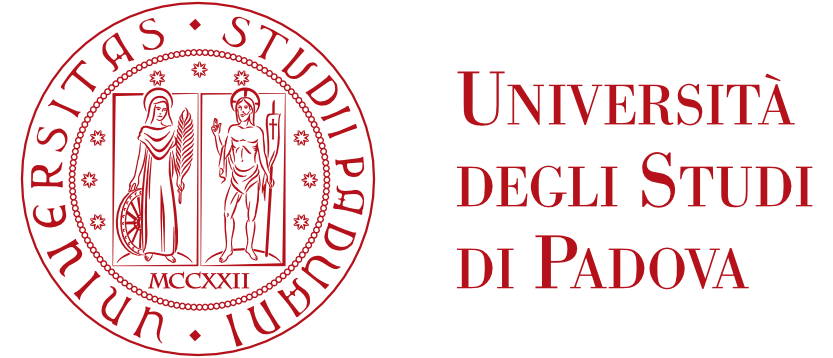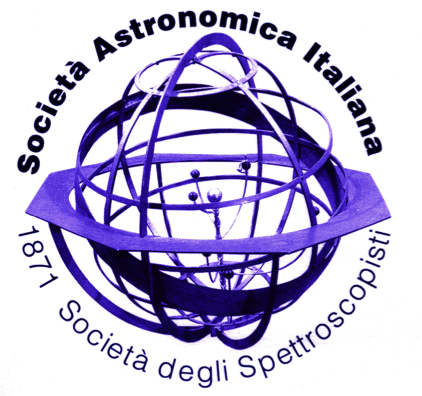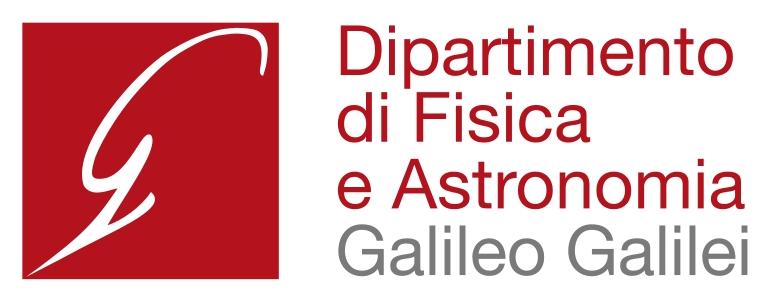An Extraordinary Journey Into The Transient Sky
Padova, Italy
An Extraordinary Journey Into The Transient Sky:
from restless progenitor stars to explosive multi-messenger signals
A conference in honour of Enrico Cappellaro, Massimo Della Valle, Laura Greggio, Massimo Turatto
We are delighted to announce the conference: “An extraordinary journey into the Transient Sky: from restless progenitor stars to explosive multi-messenger signals. A conference in honour of Enrico Cappellaro, Massimo Della Valle, Laura Greggio and Massimo Turatto”, which will be held from 1st to 4th April 2025, in Padua (Italy).
Supernovae play a key role in various issues in modern astronomy and cosmology. Current surveys have given an enormous boost to the study of transients and supernovae in particular, and it is essential to discuss the state-of-the-art before entering a golden age of the study of the transient Universe. Thanks to the synoptic surveys that will monitor every night the entire visible sky, from optical to radio, and the new-generation instrumentation that will make it possible to observe all the messengers associated with supernova explosions, from photons to neutrinos, from high-energy particles to gravitational waves, it will finally be possible to have both a statistically significant sample of events and a very detailed overview of individual events.
The study of supernovae in the Italian scientific community began in the 1960s with the work of Leonida Rosino and Roberto Barbon and subsequently received a great impulse thanks to Enrico Cappellaro, Massimo Della Valle, Laura Greggio and Massimo Turatto, who studied in Padua in the same years. With this international conference, we intend to celebrate their retirement by recalling their important contribution to the study of supernovae and discussing the still open challenges that we are ready to take up.
Reviewing the trajectory of our honorees, we will touch on topics such as the progenitors of supernovae, the search for supernovae and their rates, the supernova class zoo, supernovae in connection with gamma-ray bursts, and supernova observations in the age of multi-messenger Astronomy.
With patronage from
 |
 |
 |
 |
-
-
1
WelcomeSpeaker: Roberto Ragazzoni (Istituto Nazionale di Astrofisica (INAF))
-
2
The last supernova and the first telescope: Galileo Galilei on SN1604Speaker: Matteo Cosci (Ca' Foscari University of Venice)
-
3
Historical and natural archives as epistemic key for nova and supernova physicsSpeaker: Ralph Neuhäuser (AIU, U Jena, Germany)
-
4
Memories of SN1987ASpeaker: Jason Spyromilio (ESO)
-
5
Latest developments around SNR 1987ASpeaker: Patrice Bouchet (CEA-Saclay, Paris Cité University)
-
6
First results from Euclid transient survey (Invited talk)
Invited talk
Speaker: Isobel Hook (Lancaster University) -
7
ATLAS local volume survey: overview and resultsSpeaker: Shubham Srivastav (University of Oxford)
-
8
Lulin observatory's rapid response to extreme transientsSpeaker: Janet Chen (National Central University)
-
9
Supernova searches with the 4m International Liquid Mirror TelescopeSpeaker: Kuntal Misra (presenter Naveen Dukiya) (Aryabhatta Research Institute of observational sciencES (ARIES))
-
11:10
Coffee break
-
10
Exploring Some New Frontiers in Understanding Supernovae (Invited talk)
Invited talk
Speaker: Mansi Kasliwal (Caltech) -
11
JWST transientsSpeaker: Lifan Wang (Texas A&M University)
-
12
JWST Observations of SupernovaeSpeaker: Eddie Baron (Planetary Science Institute)
-
13
JWST Observations of White Dwarf SupernovaeSpeaker: Saurabh Jha (Rutgers University)
-
14
New supernova types and the supernova classification schemeSpeaker: Avishay Gal-Yam (Weizmann Institute of Science)
-
13:00
Lunch
-
15
From X to radio, a review and a future vision (Invited talk)
Invited talk
Speaker: Raffaella Margutti (UC Berkeley) -
16
Probing the Final Stages of Massive Stars: A Systematic Radio Survey of Core-Collapse SupernovaeSpeaker: Assaf Horesh (The Hebrew University of Jerusalem)
-
17
AT2024wpp and the Herd of Spherical CowsSpeaker: Miika Pursiainen (University of Warwick)
-
18
An Ultraviolet View of the Supernova ZooSpeaker: Peter Brown (Texas A&M University)
-
19
Neutrino news from the transient sky (Invited talk)
Invited talk
Speaker: Irene Tamborra (Niels Bohr Institute) -
16:10
Coffee break
-
20
From CC-SNe to GRBs: the state-of-the-art (Invited talk)
Invited talk
Speaker: Elena Pian (Istituto Nazionale di Astrofisica (INAF)) -
21
A JWST survey of gamma-ray bursts supernova progenitorsSpeaker: Daniele Malesani (Cosmic Dawn Center, Niels Bohr Institute)
-
22
Cosmology and multi-messenger astrophysics with Gamma-Ray Bursts: past, present and futureSpeaker: Lorenzo Amati (INAF - OAS Bologna)
-
23
Posters flash talks, session 1
-
1
-
-
24
Interacting SNe & SN impostors (Invited talk)
Invited talk
Speaker: Nathan Smith (University of Arizona) -
25
An optical/NIR observational campaign in search for pre-supernova outbursts in Red SupergiantsSpeaker: Fabrizio Bocchino (INAF-Osservatorio Astronomico di Palermo)
-
26
Tracing the mass-loss history from type II supernova explosions back through the red supergaint phase.Speaker: Stefano Valenti (University of California Davis)
-
27
SN 2023zkd: A New Member of the Precursor FamilySpeaker: Alexander Gagliano (Harvard CfA/MIT)
-
28
Precursor Eruptions Preceding Supernovae - Upcoming Observations and Theoretical ChallengesSpeaker: Seán Brennan (Stockholm University)
-
29
In between Novae and CC SNe: the low energetic zoo (Invited talk)
Invited talk
Speaker: Morgan Fraser (University College Dublin) -
30
The fate of the progenitors of Luminous Red NovaeSpeaker: Andrea Reguitti (INAF-Osservatorio Astronomico di Brera)
-
11:10
Coffee break
-
31
Spectropolarimetry of SupernovaeSpeaker: Alex Filippenko (University of California, Berkeley)
-
32
Core-collapse Supernova ratios: observations vs theoretical predictionsSpeaker: Claudia Gutiérrez (IEEC -- ICE, CSIC)
-
33
A Panchromatic View of Shock Power in Type II SupernovaeSpeaker: Wynn Jacobson-Galan (Caltech)
-
34
Deciphering the Nature of Short-Plateau Type II SupernovaeSpeaker: Raya Dastidar (Universidad Andres Bello, Chile)
-
35
Early flash ionisation signatures in type IIP SNeSpeaker: Bhavya Ailawadhi (ARIES, Nainital)
-
36
3D NLTE spectral modelling of Low-luminosity Type IIP SNe in the nebular phaseSpeaker: Bart van Baal (Stockholm University)
-
37
The binary origin of SN 2018gj, and the evidence of a significant contribution of binary interactions in nearby Type II-P SN progenitorsSpeaker: Manos Zapartas
-
13:15
Lunch
-
38
Nearby Core-Collapse Supernova Progenitors (Invited talk)
Invited talk
Speaker: Melina Bersten (Universidad Nacional de La Plata) -
39
Failed supernovae may help understanding the Early UniverseSpeaker: Alvio Renzini (INAF - Osservatorio Astronomico di Padova)
-
40
Exploring the variety of Type Ibn supernovaeSpeaker: Yongzhi Cai (Yunnan Observatories, Chinese Academy of Sciences)
-
41
A thourough investigation on the evolution of Helium rich interacting (Ibn) supernovaeSpeaker: Anjasha Gangopadhyay (Oskar Klein Centre, Stockholm University, Sweden)
-
42
On the outflows driven by choked jets in stellar envelopesSpeaker: Matteo Pais (INAF - Osservatorio astronomico di Padova (OAPD))
-
43
Binary progenitor systems for Type Ic supernovaeSpeaker: Martín Solar (Adam Mickiewicz University in Pozna_)
-
16:10
Coffee break
-
44
Progenitor and Companion Constraints of the Stripped-Envelope Supernova SN2017gaxSpeaker: Jenny Su (University of Toronto)
- 45
-
46
Late-Time Shock Interaction in Core-Collapse Supernovae: A Window into Progenitor EvolutionSpeaker: Amit Kumar (presenter Raya Dastidar) (Royal Holloway - University of London, UK)
-
47
Optical spectroscopy of two type IIn supernovae at similar epochs: SN 2017hcc and SN 2023usc - comparison with other type IIn SNeSpeaker: Alak Ray (Tata Institute of Fundamental Research, Mumbai)
-
48
Posters flash talks, session 2
-
24
-
-
49
Core-collapse Supernova Theory in 2025: Progress and Puzzles (Invited talk)
Invited talk
Speaker: Thomas Janka (MPA Garching) -
50
The primary role of jets in powering core-collapse supernovaeSpeaker: Noam Soker (Technion - Israel)
-
51
Physical characterization of Core-Collapse Supernovae with "fast" modelling procedures"Speaker: Stefano Pio Cosentino (Università degli Studi di Catania)
-
52
SN 2023ixf – an average-energy explosion with circumstellar medium and a precursorSpeaker: Alexandra Kozyreva (Sapienza Università di Roma & Sezione INFN Roma)
-
53
Superluminous SNe: beyond standard stellar demises (Invited talk)
Invited talk
Speaker: Cosimo Inserra (Cardiff University) -
54
Photospheric Spectra of Superluminous SupernovaeSpeaker: Aysha Aamer (Queen's University Belfast)
-
55
Chasing eruptive mass loss prior to superluminous supernovaeSpeaker: Anamaria Gkini (Stockholm University)
-
11:10
Coffee break
-
56
Type Ia SN explosion scenarios and their associated progenitor systems (Invited talk)
Invited talk
Speaker: Friedrich Roepke (Heidelberg University) -
57
Unveiling Alternative Evolutionary Paths in Cataclysmic Variables: Implications for SN Ia ProgenitorsSpeaker: Gagik Tovmassian (Universidad Nacional Autonoma de Mexico)
-
58
Simulate SN Ia and fail SN Ia of single massive CO WDSpeaker: Amir Michaelis (Technion)
-
59
Non-LTE radiative transfer simulations: Improved agreement of the double detonation with normal Type Ia supernovaeSpeaker: Christine Collins (Trinity College Dublin)
-
60
SNIa Progenitors (Invited talk)
Invited talk
Speaker: Silvia Toonen (University of Amsterdam) -
13:05
Lunch
-
61
The extremes of thermonuclear explosions revisited (Invited talk)
Invited talk
Speaker: Stefan Taubenberger (MPA Garching) -
62
The diversity in the thermonuclear SN population as observed from ZTFSpeaker: Georgios Dimitriadis (Lancaster University)
-
63
Links between ejecta velocities of supernovae Ia and host galaxy characteristicsSpeaker: Lilit Barkhudaryan (Yerevan Physics Institute, Armenia)
-
64
Looking Ahead to See Before: Late-time (t > 600 d) HST Observations of Type Ia SNeSpeaker: Huei Sears (Rutgers, The State University of New Jersey)
-
65
Environments of type Ia supernovae in terms of Si II velocities with Integral Field SpectroscopySpeaker: Cristina Jiménez-Palau (Institute of Space Sciences (ICE-CSIC))
-
66
New Insights From Multi-Wavelength Early-Time Observations of Type Ia SupernovaeSpeaker: Willem Hoogendam (University of Hawaii Institute for Astronomy)
-
16:10
Coffee break
-
67
Beyond the Mass Step: Improving the Hubble Diagram with Future Surveys through an [O II] Correction to SN Ia Light CurvesSpeaker: Bailey Martin (The Australian National University)
-
68
Hubble Constant Tension: Transient Versus Static Perspectives & the TRGB-SBF Project with JWSTSpeaker: Michele Cantiello (INAF O.A. Abruzzo)
-
69
Calibrating Type Ia Supernovae using Surface Brightness FluctuationsSpeaker: Joseph Jensen (Utah Valley University)
-
70
Transients and Chemical Pollution (Invited talk)
Invited talk
Speaker: Donatella Romano (Istituto Nazionale di Astrofisica (INAF)) -
71
Core-collapse supernova rates and luminosity functions from ASAS-SNSpeaker: Thallis Pessi (ESO (European Southern Observatory))
-
72
The cosmic rate of pair-instability supernovaeSpeaker: Francesco Gabrielli (SISSA)
-
73
The Volumetric Rate of Type Ia Supernovae in the Dark Energy SurveySpeaker: Edward Charleton (University of Southampton)
-
49
-
-
74
LSST expectations (Invited talk)
Invited talk
Speaker: Federica Bianco (University of Delaware) -
75
Finding Early SNIa with the Fink brokerSpeaker: Emille Ishida (CNRS/LPCA)
-
76
Constraining Supernova progenitors through the rate with the LSSTSpeaker: Vincenzo Petrecca (Istituto Nazionale di Astrofisica (INAF))
-
77
Core-collapse supernovae parameters in the LSST eraSpeaker: Andrea Simongini (Istituto Nazionale di Astrofisica (INAF))
-
78
Industrialising spectroscopic follow up of transients with TiDESSpeaker: Chris Frohmaier (University of Southampton)
-
79
Supernovae: from current surveys to the future with RubinSpeaker: Anais Möller (Swinburne University)
-
80
Present and future of multi-messenger astronomy, from the ground to the moon (Invited talk)
Invited talk
Speaker: Marica Branchesi (Istituto Nazionale di Astrofisica (INAF)) -
11:05
Coffee break
-
81
Probing Core-Collapse Events through Gravitational Waves and Gamma-Ray BurstsSpeaker: Maurice van Putten (Sejong University/INAF-OAS Bologna)
-
82
Core-Collapse detection rates from Einstein TelescopeSpeaker: Ines Francesca Giudice (INAF OACN - UniNA)
-
83
Observation of DWD as SNIa progenitors using the Lunar GW AntennaSpeaker: Giovanni Benetti (Università degli Studi di Padova - DFA)
- 84
-
85
Concluding remarks
-
74
